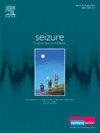咪达唑仑与劳拉西泮治疗儿童癫痫持续状态的有效性和安全性:一项系统综述和荟萃分析
IF 2.8
3区 医学
Q2 CLINICAL NEUROLOGY
引用次数: 0
摘要
癫痫持续状态是一种危及生命的儿科急症,具有高发病率和死亡率,快速给予苯二氮卓类药物至关重要。然而,最佳药物和给药途径仍然是正在进行的评估的主题,劳拉西泮和咪达唑仑之间的直接正面比较仍然有限。方法对咪达唑仑与劳拉西泮治疗小儿癫痫持续状态的随机对照试验(RCTs)进行荟萃分析。主要结局包括治疗成功率和失败率、药物给药后癫痫发作停止的时间和安全性结局(呼吸抑制和需要插管)。次要结局包括癫痫发作复发、需要抢救药物和两个时间间隔:从医院到给药,以及从医院到癫痫发作停止。采用随机效应模型对合并标准化平均差(SMD)和风险比(rr)进行分析。偏倚风险通过Cochrane偏倚风险工具进行评估。结果纳入4项随机对照试验,共纳入326例患者。两种干预措施在癫痫终止成功率(RR = 0.98, 95% CI [0.92, 1.04], p = 0.45)和失败(RR = 0.91, 95% CI [0.44, 1.89], p = 0.81)方面具有可比性。两种药物给药后癫痫发作停止的平均时间相似(SMD = 0.01, 95% CI [-0.27, 0.28], p = 0.95),尽管鼻内咪达唑仑亚组的持续时间较短(SMD = -0.02 [-0.38, 0.34], p = 0.90)。定性合成表明鼻内咪达唑仑与更短的给药时间和更快速的癫痫控制有关。安全概况具有可比性。结论:在本荟萃分析中,无论给药途径如何,咪达唑仑在治疗儿童癫痫持续状态方面都不逊于劳拉西泮。初步证据表明,鼻内咪达唑仑可能提供更快速和实用的给药,使其在某些临床情况下更有利。需要进一步的多中心试验来证实这些发现。本文章由计算机程序翻译,如有差异,请以英文原文为准。
Effectiveness and safety of midazolam versus lorazepam for pediatric status epilepticus: A systematic review and meta-analysis
Introduction
Status epilepticus is a life‐threatening pediatric emergency with high morbidity and mortality, where rapid benzodiazepine administration is critical. However, the optimal agent and route of administration remain subjects of ongoing evaluation, with direct head-to-head comparison between lorazepam and midazolam remaining limited.
Methods
An aggregate-level meta-analysis was conducted on randomized controlled trials (RCTs) comparing the efficacy of midazolam against lorazepam in managing pediatric status epilepticus. Primary outcomes included treatment success and failure rates, time to seizure cessation from drug administration, and safety outcomes (respiratory depression and need for intubation). Secondary outcomes included seizure recurrence, need for rescue medications, and two time intervals: from hospital arrival to drug administration, and from hospital arrival to seizure cessation. Pooled standardized mean difference (SMD) and risk ratios (RRs) were analyzed using a random-effects model. Risk of bias was assessed by the Cochrane risk-of-bias tool.
Results
Four RCTs were included in the analysis, encompassing a total of 326 patients. The two interventions were comparable in terms of seizure termination success (RR = 0.98, 95 % CI [0.92, 1.04], p = 0.45) and failure (RR = 0.91, 95 % CI [0.44, 1.89], p = 0.81). The mean time of seizure cessation following drug administration was similar for both medications (SMD = 0.01, 95 % CI [-0.27, 0.28], p = 0.95), although the intranasal midazolam subgroup exhibited a shorter duration (SMD = -0.02 [-0.38, 0.34], p = 0.90). A qualitative synthesis indicated that intranasal midazolam was associated with a shorter administration time and more rapid seizure control upon hospital arrival. Safety profiles were comparable.
Conclusion
In this meta-analysis, midazolam, irrespective of the route of administration, is shown to be non-inferior to lorazepam in the management of pediatric status epilepticus. Preliminary evidence indicates that intranasal midazolam may provide more rapid and practical administration, making it more favorable in certain clinical contexts. Further multicenter trials are needed to confirm these findings.
求助全文
通过发布文献求助,成功后即可免费获取论文全文。
去求助
来源期刊

Seizure-European Journal of Epilepsy
医学-临床神经学
CiteScore
5.60
自引率
6.70%
发文量
231
审稿时长
34 days
期刊介绍:
Seizure - European Journal of Epilepsy is an international journal owned by Epilepsy Action (the largest member led epilepsy organisation in the UK). It provides a forum for papers on all topics related to epilepsy and seizure disorders.
 求助内容:
求助内容: 应助结果提醒方式:
应助结果提醒方式:


